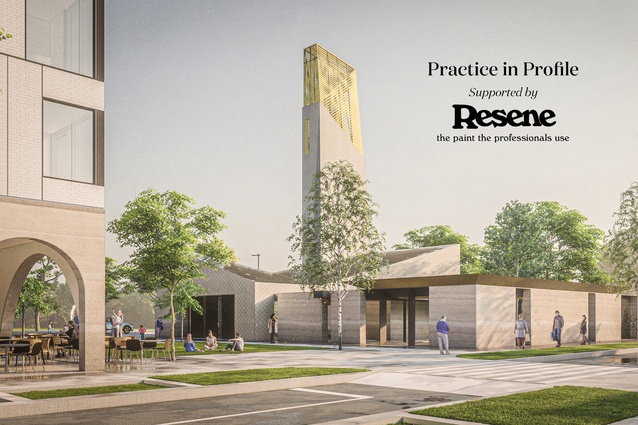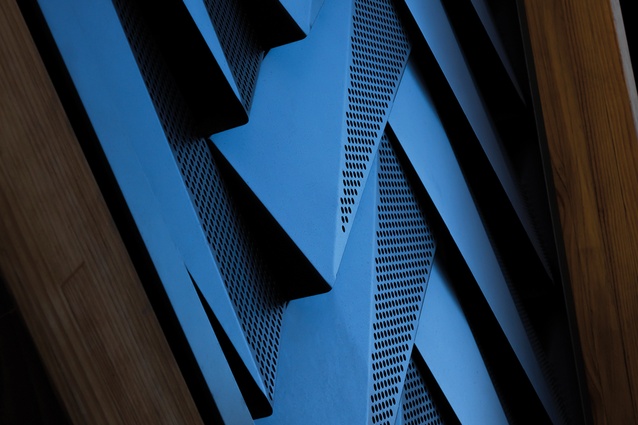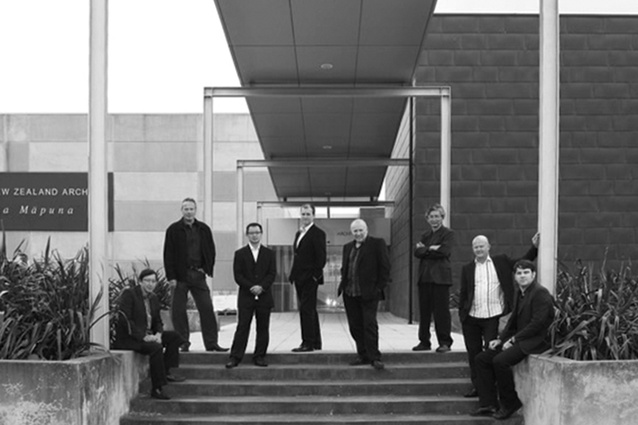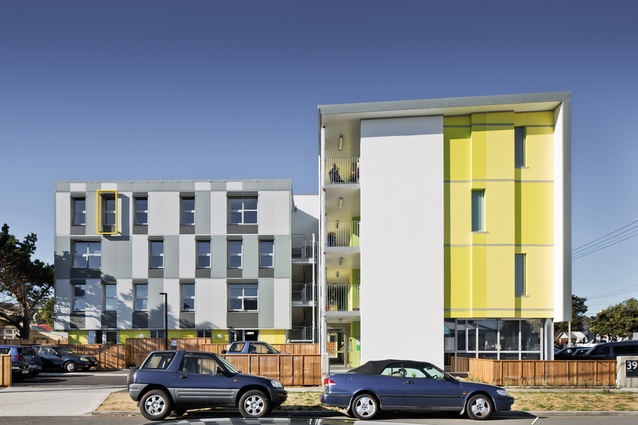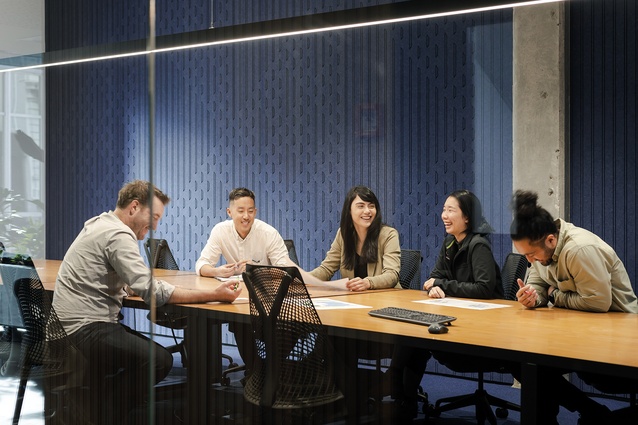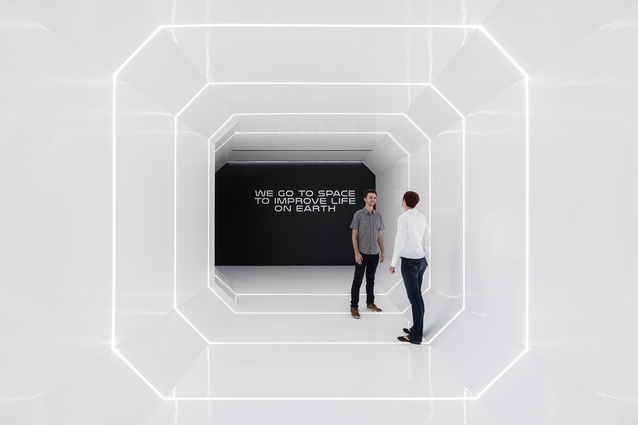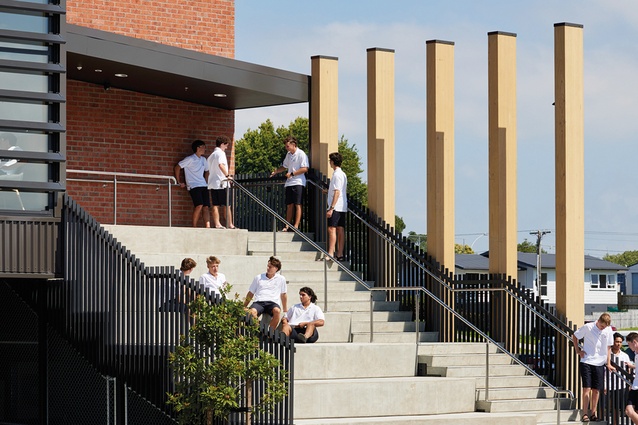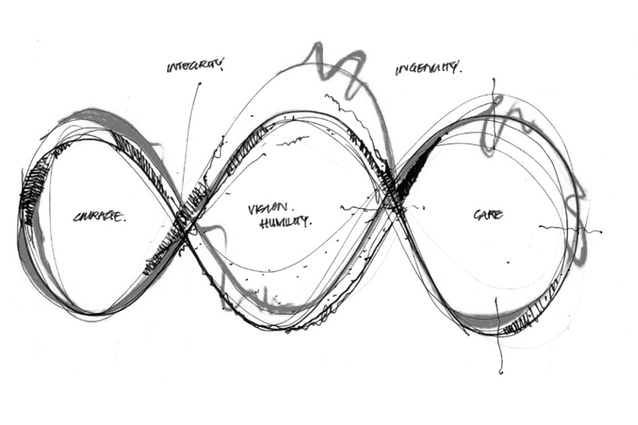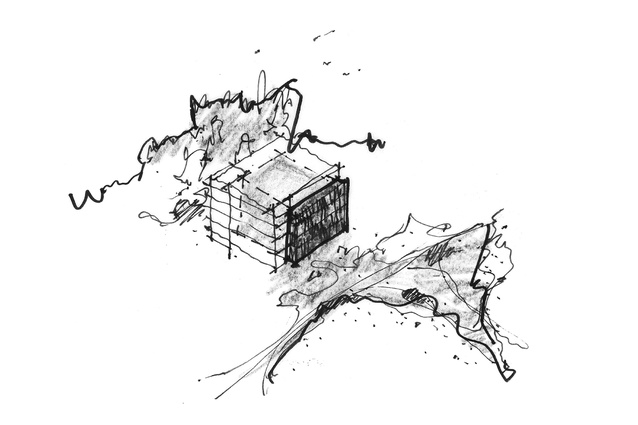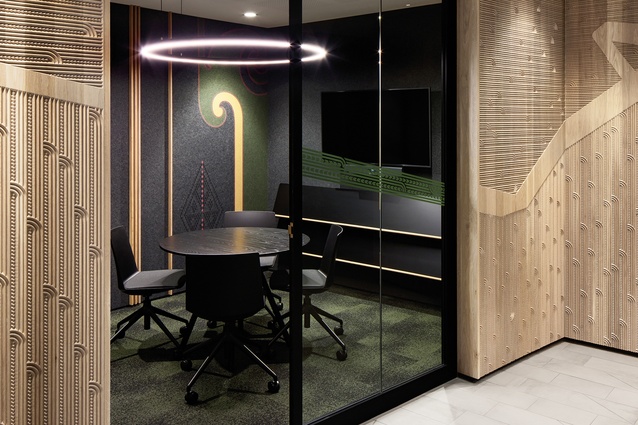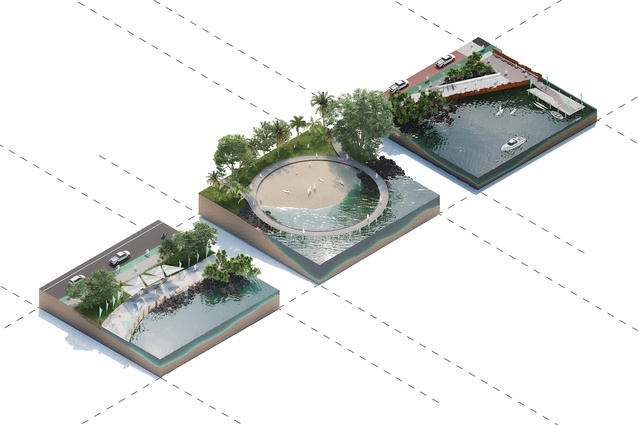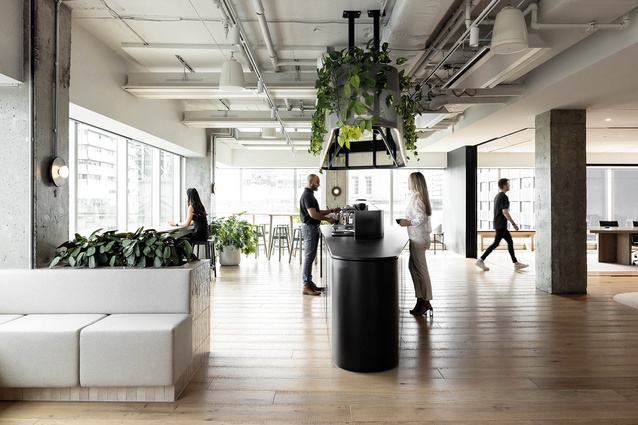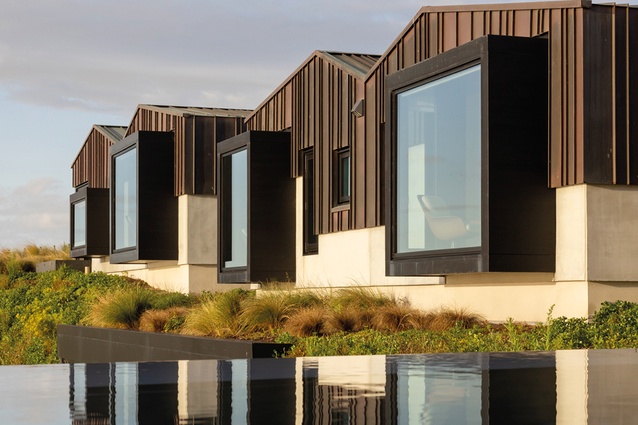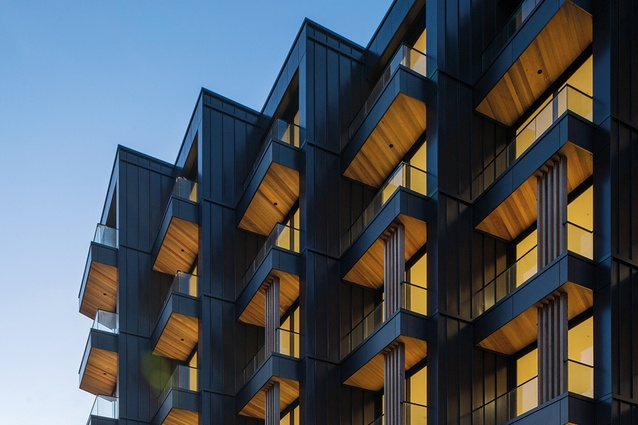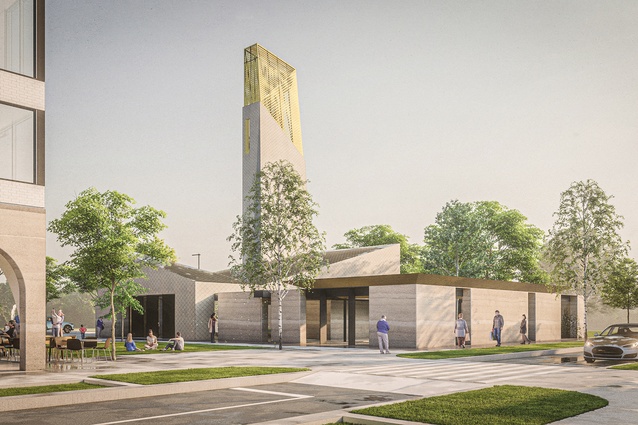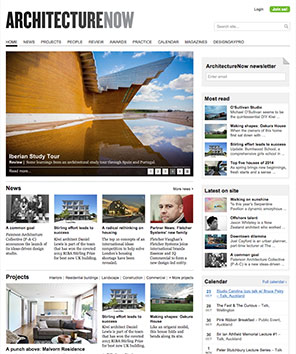People, place and culture
Michael Ware, a director of Designgroup Stapleton Elliott (DGSE), reflects on the studio’s unique evolution, exploring the bold trajectory of this people-centric practice.
Though I originally pushed back on the idea of narrating this article, I quickly realised that I hold a unique insight into our studio’s evolution — in many ways, I’ve been witness to the fascinating trajectory of the practice. I guess this makes me the ideal candidate.
Joining Designgroup Stapleton Elliott (DGSE) as a clean-shaven and enthusiastic architectural graduate in 2011, I’ve watched as a close-knit Wellington and Palmerston North studio of 24 turned into a humming team of 130+ across six locations within Aotearoa. Of course, that’s just part of the story — our origins stretch back 50 years earlier.
While I happen to be the voice behind this piece, we see ourselves as a design collective, with many others contributing behind the scenes. I want to pay homage to the founding principals who paved the way for who we are today. At DGSE, we live and breathe a singular, unifying mantra — “enriching lives through architecture”. This pithy little one-liner might seem obvious at face value but it’s deeply embedded within everything we do — in fact, it’s even more relevant today than it has been ever before.
The genesis of a big idea
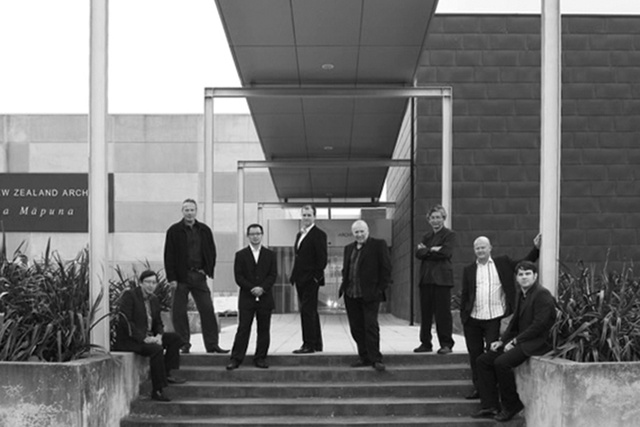
With roots back to 1965, when Reg Stapleton started up in Lower Hutt, and 1974, when Brian Elliott began his practice in Palmerston North, the company has been building up to what it is today — from a couple of small practices in the Lower North Island to something a bit bigger, but with that same nimble personability that runs deep within our DNA. To discuss the birth of DGSE, I first need to touch on Designgroup New Zealand (DGNZ) — a collective of like-minded practices formed from an idea of Brian’s in the late 1980s. The purpose of this collective was to provide clients with greater access to architectural expertise and resources than might otherwise be obtainable. Designgroup Stapleton Architects (DSA) and Designgroup Elliott Architects (DEA) were friends and founding members of that alliance, proceeding to work together on several successful DGNZ projects, including extensive work for UCOL and winning a bid by design competition for a new Ministerial Building at Parliament worth circa $100 million. Sadly (although possibly unsurprisingly), a change in government saw this significant project shelved at the end of Detailed Design.
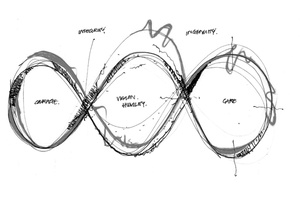
Jumping forward to 2009, after a long-standing collaborative partnership, Brian suggested to DSA that both practices would benefit from a much stronger business and design relationship. “The principals each had such unique and diverse skill sets, ages and backgrounds — it made so much bloody sense,” recalls Brian. And so, Designgroup Stapleton Elliott emerged, comprising eight principals — Brian Elliott, Nigel Dong, Mark Young, Neil Kemp, Craig Roberts, Mike Evans, John Sik and Gordon Morrison.
With the birth of DGSE, Brian — who had been an NZIA President and an AERB/NZRAB Board member — was given the task of leading the new entity with Nigel and Mark, who set about producing a new company constitution to underpin the direction and performance of DGSE into the future. This constitution set out the core directions of the company, including a flat management structure and a wide key employee shareholding. We were poised to shake up the industry, just in time for the dreaded GFC to rear its ugly head.
Our growth and growing up
It wasn’t the best of times, in 2009, to start a new practice — work was scarce and the economic downturn had people running for the hills. However, the newly merged practice had some exciting projects on the horizon. From the outset, we adopted a war cry that no project was too small and this helped us ride the turbulence of the tougher times. To this day, we maintain this same philosophy as strong believers that even the simplest architecture can present the greatest opportunities.
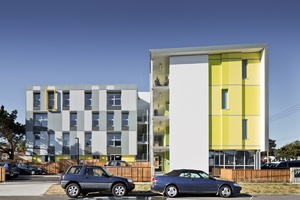
I joined the practice in 2011 and I still remember my interview with Nigel. I was living in Sweden when I had my first meeting over the phone at 12am, with a second interview a week later in person. It was a tough time for graduates to find work. I was a relatively fresh graduate with an enthusiasm for design and some technical experience, having worked as an architectural technician in a previous life — I guess either that or wearing a suit to the interview (on advice from the recruiter) sealed the deal! From the beginning, Craig, who drove the design direction of DGSE, ‘gave me the pen’, so to speak, to be an active contributor, not a spectator nor an observer. Craig taught the concept of the ‘after image’ as he would call it. If you can simply draw by memory the intent or spirit of the architecture, it proves a potent design clarity: simple, refined, clear and concise. This approach, coming from an extremely accomplished, national-award-winning architectural practice, demonstrates the intrinsic collaborative nature of DGSE. Over those next few years, we delivered some ground-breaking people-centric stuff, including a new five-storey teaching block at Wellington Girls’ College, and Wellington council housing developments at Regent Park and Marshall Court. We were out there doing big things with a comparatively lean team, starting to make our mark.
One studio, one culture
When I started, DGSE was small enough to have the office Christmas party at Brian’s pint-sized bach — an intimate gathering with partners that would undoubtedly drag into the wee hours of the following day. As we continued to grow, so did the pains of holding onto our humble origins. From 24 staff in 2009, DGSE rapidly grew over the next decade and a half to a firm of 130+, across six regional locations. Building on Te Whanganui-a-Tara Wellington and Te Papaioea Palmerston North, we expanded into Tāmaki Makaurau Auckland in 2015. In search of that illusive work-life balance (or so the story goes), I set up our Tauranga Moana studio in 2018, followed by Ahuriri Napier’s Designgroup PMA joining us later that same year. Most recently, our Tāhuna Queenstown studio has emerged in response to a handful of significant projects in the Central Otago region. It’s never been our ambition to expand but, rather, this was borne from a nimble approach of seizing opportunities. We still work hard but we’ve managed to hold onto the essence of what has always defined us. Our people are at the heart of everything we do and, as Mike Evans notes, “we’re a social and connected bunch, and that informality is a magnetic force that appeals to so many.”
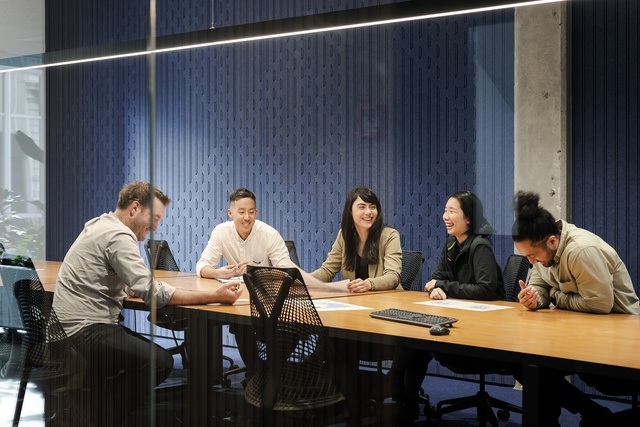
In 2015, the growth of the company necessitated a look at the leadership structure. Nigel Dong was identified as the natural successor to take over as managing director, in part thanks to one simple truth — everyone knows Nigel. As clients, consultants and fellow architects often ask, “where does he get his energy from?” He is the driving force behind DGSE as we stand today — a true leader who earns respect through dedication, determination and optimism, underpinned by an unrelenting work ethic.
Something that we like to think sets us apart in the industry is our one-studio mentality. This isn’t just lip service but an intrinsic part of the way we operate. As a part of our growing pains, we relooked at our regional studio network within a national studio framework. As a result, DGSE became digitally enhanced, ensuring projects could be easily completed nationally by the best team for the job, with local on-the-ground support as required. The dreaded ‘C’ word of 2020 reinforced that the architectural discourse can successfully operate across physical and virtual spaces — we’ve honed this mentality into a responsive and agile national practice.
Design with purpose
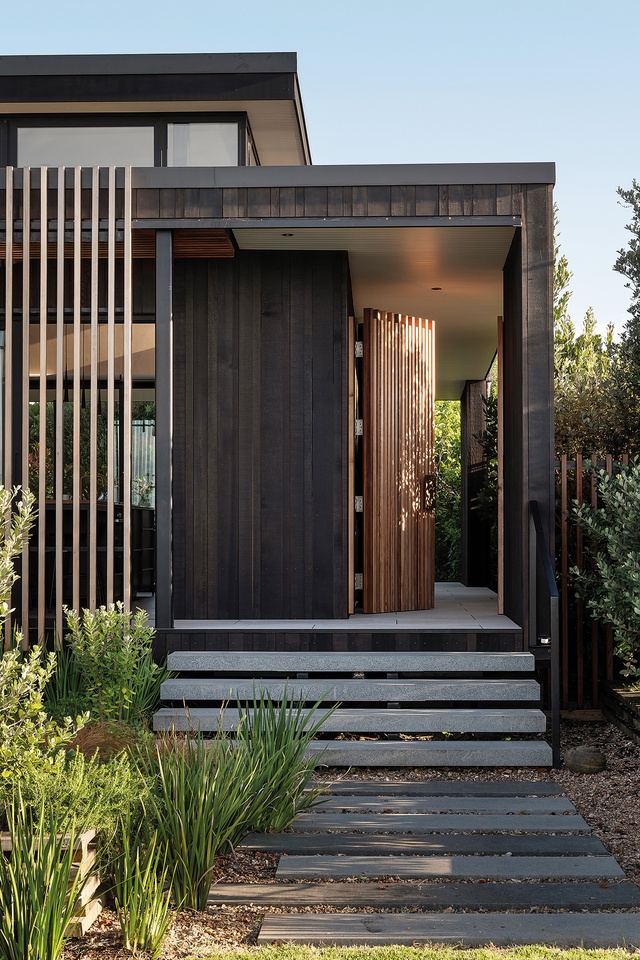
As mentioned, with our growth came both advantages and challenges. How do we maintain the soul of the company amidst such rapid expansion in both people and projects? How do we remain nimble while needing to implement new systems and processes?
The answer began to reveal itself with the arrival of new talent. With our diverse team — 52 per cent female and 48 per cent male, representing 20+ nationalities — our studio has become a vibrant collective of perspectives. Each person brings a distinct lens, shaped by their background, discipline and experiences. Recognising the value of this multiplicity, I formed a think-tank of skilled and diverse designers to work together to develop a new design process — one grounded in these varied perspectives and shaped around three guiding pillars: People, Place and Culture.
Since I became a director in 2023, my focus has been on nurturing our craft across the practice — helping ensure we remain leaders in the design of the built environment. We believe that every client is unique, and this is why we don’t adhere to a singular aesthetic or style. Instead, each project is an opportunity to tailor a bespoke response — one that is user-centric and richly contextual.
While our projects vary widely, our approach remains constant. We begin every design by engaging deeply with people, place and culture — the pillars that anchor everything we do. We’re a design-led practice that values both digital and analogue tools, taking a hands-on, exploratory approach to developing ideas. We believe in collective creativity — no matter your role, if you have an idea, we want it on the table. Everyone is encouraged to pick up that metaphorical 6B pencil and contribute.
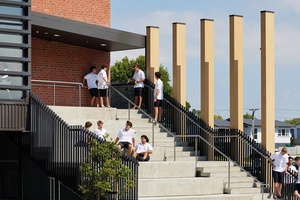
In recent years, we’ve worked across an extraordinary range of project types — each one pushing our thinking and expanding our practice. Projects like Rocket Lab, Tauranga Boys’ College and Waka Kotahi NZ Transport Agency stand out. Though vastly different in scale and brief, they share a common thread of deep engagement. Whether it’s meaningful collaboration with clients, experimental design processes or a deep-rooted connection to context — it’s that spirit of engagement that defines our work.
Our refined design process begins with the formation of a design collective from project initiation — a multidisciplinary group that brings a diverse range of perspectives to the table. This collective is intentionally curated to represent varied lenses, enabling active contribution to the architectural discourse from the earliest stages of concept design. By embedding these voices at the outset, the pillars of people, place and culture become intrinsic to the design outcome.
A vital component of this evolution was the introduction of DGSE’s Indigenous Design Rōpū (IDR), championed by Matamoana Nuku, Alex Heperi and Carinnya Feaunati, and supported by our broader community of Indigenous and Pacific architects, landscape architects, designers and technicians. The IDR plays a key role in ensuring that Indigenous views and knowledge systems are woven meaningfully and respectfully into our projects — not only enriching the work but grounding it in the cultural and environmental realities of Aotearoa and the wider Pacific.
Providing a voice
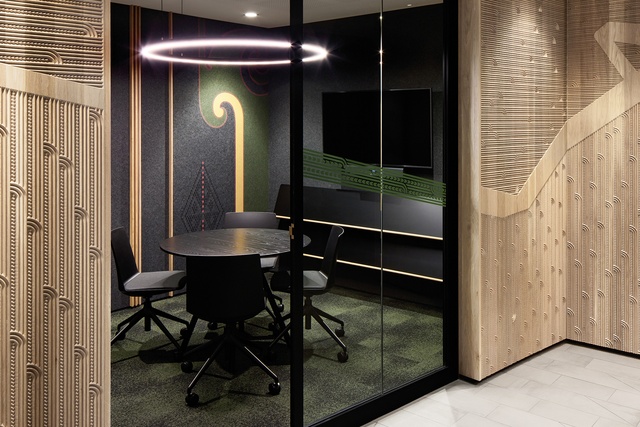
Through our process of design refinement and critical self-reflection, and with the guidance of the IDR, we were able to respond proactively to the shift in narrative that was happening at both a global and a national level. Architecture was no longer simply a shelter or status symbol but an opportunity to become a living expression of identity, belonging and whakapapa.
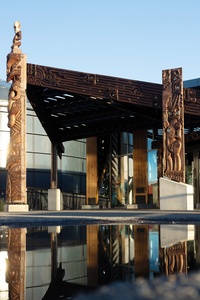
Indigenous voices are transforming the ways in which buildings and spaces are made and what they mean, and are forging new relationships between people and whenua. Through nurturing this considered approach to design engagement, we’ve learned so much and we continue to grow in this space. As an example, in delivering Te Whanganui-a-Tara’s Human Rights Commission, the design authorship and direction was manawhenua led — championed by revered manawhenua artists who imbued the space and, ultimately the organisation, with a kaupapa-led manifestation of a powerful karakia. Similarly, Waiaroha — Heretaunga Water Discovery Centre was a fully collaborative multidisciplinary undertaking, supported by our IDR team to ingrain a deep sense of place across the project. As Matamoana Nuku notes, “the perception of relinquishing design authorship can be a confronting thing for any designer but is critical if we are to achieve an outcome that is truly an authentic expression, rooted in people, place and culture.”
The multidisciplinary movement
As our practice has continued to evolve and the complexity of our projects has increased, we’ve continued to bring an all-encompassing point of view to our clients — more so now through a truly nimble design offering. Perhaps a response to a more sustainable built environment, our landscape architecture team emerged from our desire to offer a holistic design response. As a foundation to so many of our projects, we seek to integrate the natural environment into everything we do — not just a frivolous embellishment but a proper entrenched approach to design and design process. Similarly, almost every project of ours deals with interior space. Over the years, we’ve developed an enviable expertise in this area, and our dedicated interior architecture team has allowed us to challenge the norms of design thinking by instilling highly immersive and uplifting spatial experiences. At its core, our built environment is a direct response to the human condition — it’s this all-enveloping sensory experience that intrigues, inspires and transcends.
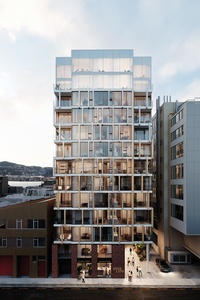
We have some pretty exciting work on the books right now and we’re pumped for the next instalment of the DGSE story. From ground-breaking housing initiatives and work across the Pacific, to the development of an entirely new city for Aotearoa, we’re looking up and we’re excited to show off a trick or two. We have a culture that fosters creative thinking and we’re intent on never staying static. Empowered by an ever-changing digital world, we’re diving into new ways of doing things — pushing forward and bringing our clients with us.
I’m a firm believer that architecture can make profound impacts on our planet and our people. We’re not just shaping the built environment; we’re altering our relationship with nature, influencing social behaviour and paving the direction of our future. At DGSE, we acknowledge the weight of our responsibility as designers and approach every project with manaakitanga (care and respect). Our mission is to seek out the spirit of a place: the people and the cultural frameworks that imbue that context. It’s with a deep understanding of each that our architecture stands to enrich the lives of those it touches. With every new client, project or challenge, DGSE continues to evolve and, through our work, we’re stronger than ever.

Designgroup Stapleton Elliott (DGSE) is a nationwide practice with roots extending back over 50 years. Formed by a large team with diverse backgrounds and skills, we assist with a wide range of design services, including architecture, interior architecture, master-planning and landscape architecture. DGSE continues to evolve its processes, focusing on cultural identity and environmental impact. This development has become instrumental to our work and enables our team to align with our guiding purpose.

